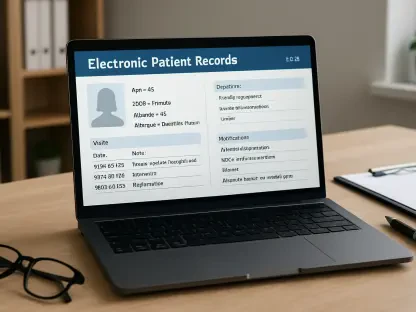The healthcare industry is in the midst of a significant digital transformation, increasingly incorporating digital tools to enhance patient care delivery. Patient portals, a cornerstone of this transformation, offer patients a digital interface to access medical records, communicate with providers, and manage various aspects of their care. Despite their potential to revolutionize healthcare interactions, the adoption of patient portals is hindered by growing concerns over data security.
Overview of the Healthcare Industry and Patient Portals
The healthcare industry, traditionally reliant on face-to-face interactions and extensive paperwork, is experiencing a profound shift toward digitization. Patient portals are becoming integral to this evolution, providing functionalities such as appointment scheduling, bill payments, and access to health records. Driven by technological innovations like AI and telehealth integration, patient portals aim to streamline patient-provider communication and enhance healthcare management. Key players in this market, along with regulations like HIPAA, are pivotal in shaping the industry’s adoption of these digital tools.
Trends Shaping Patient Portal Usage
Technological Advancements and Consumer Behavior
Emerging technologies are continually enhancing patient portals, offering features including telehealth services and AI-driven health insights. These advancements align with shifting consumer behavior, as more patients seek seamless digital healthcare solutions. The demand for enhanced patient portal functionalities opens up market opportunities, exemplified by increasing user preference toward integrated digital services.
Market Data and Growth Projections
Current market data indicates varied adoption rates across different demographics, reflecting both opportunities for growth and existing barriers. Forecasters anticipate considerable increases in patient portal usage, driven by advancements in technology and changing consumer preferences. Performance indicators highlight the potential for expansion, underscoring the importance of addressing underlying challenges to boost adoption.
Challenges in Patient Portal Adoption
Technological hurdles, particularly related to data security, remain significant. Despite the convenience offered by patient portals, concerns about data breaches impede widespread utilization. Regulatory challenges and marketplace dynamics further compound the issue, affecting consumer confidence in online data protection. Strategies to improve security, such as adopting multi-factor authentication, are essential to overcoming these obstacles and enhancing portal usability.
Regulatory Influences on Portal Security
Regulations governing data security in patient portals, such as HIPAA, play a critical role in shaping industry practices. Recent changes emphasize the need for rigorous security measures to protect patient information. Compliance with these standards is crucial in fostering consumer trust and ensuring that healthcare providers meet the expectations of secure and efficient patient data management.
Future Outlook for Patient Portals
Emerging technologies are poised to drive future developments in patient portals, offering innovative features and improved security. Potential disruptors include shifts in consumer preferences and regulatory adjustments, which may redefine market dynamics. As the industry continues to evolve, areas ripe for growth include AI integration and enhanced telehealth capabilities, driven by innovation and global economic factors.
Conclusion and Recommendations
Data security concerns have significantly impacted patient portal adoption, highlighting the urgent need for advanced security solutions. Implementing strategies such as multi-factor authentication will be critical in reassuring users of data protection. Additionally, fostering awareness and education about the benefits and security measures of portals can increase utilization rates. As patient portals evolve, emphasis on user education and technological innovation will help ensure they better meet user needs and build confidence in digital healthcare solutions.









